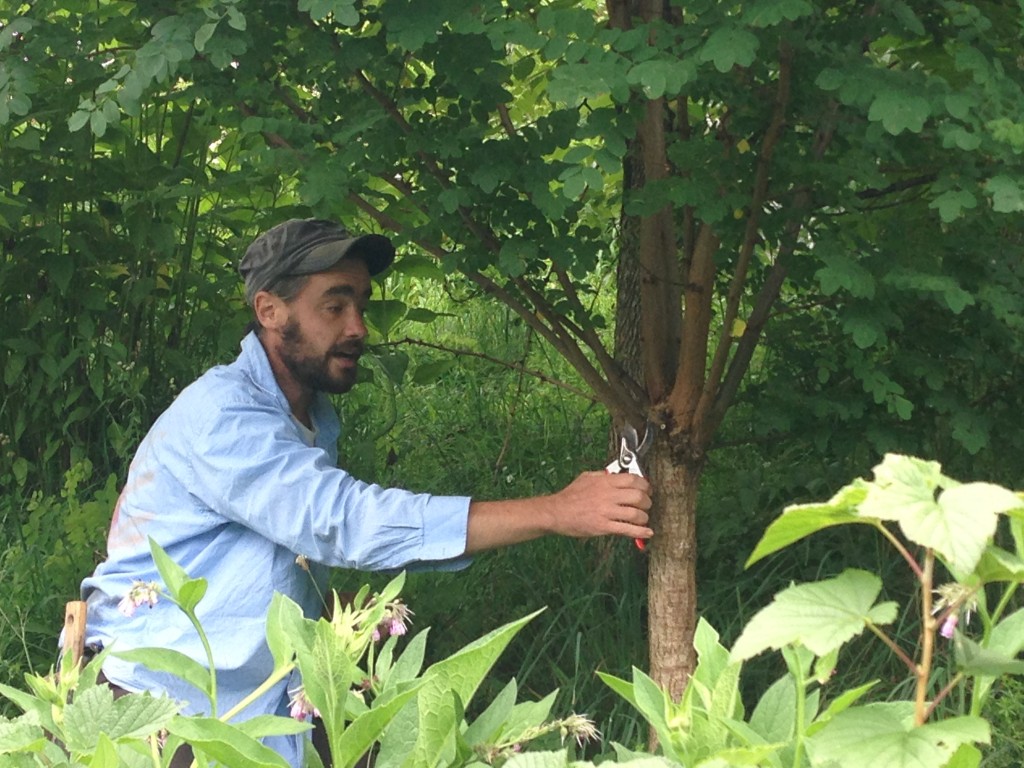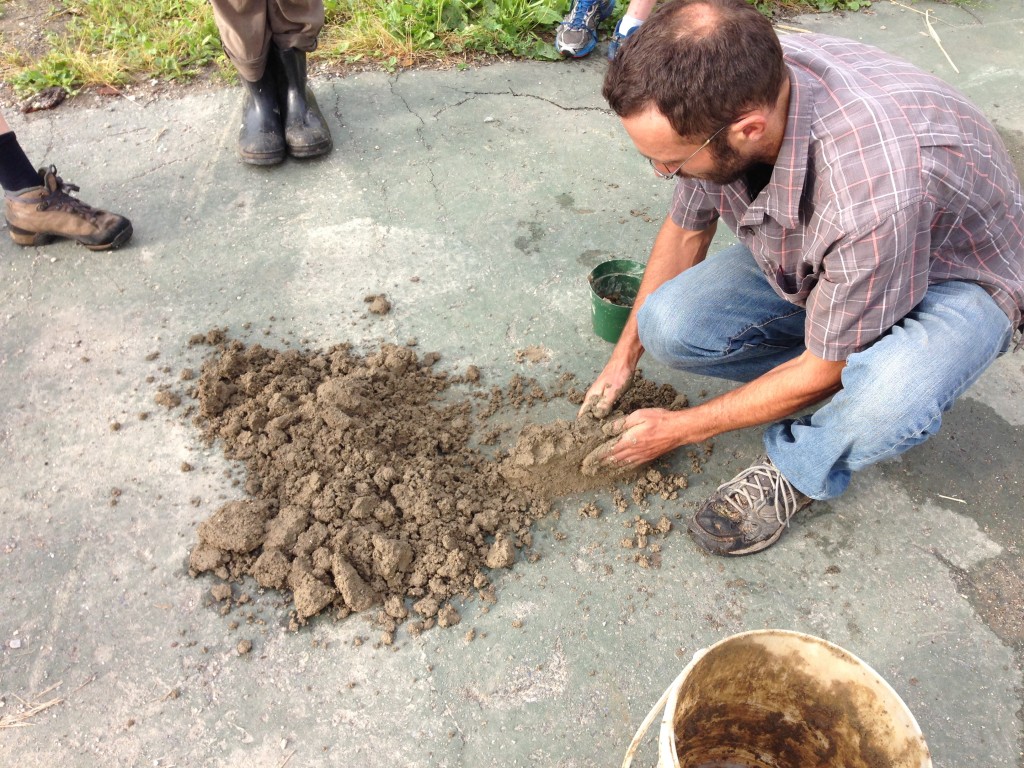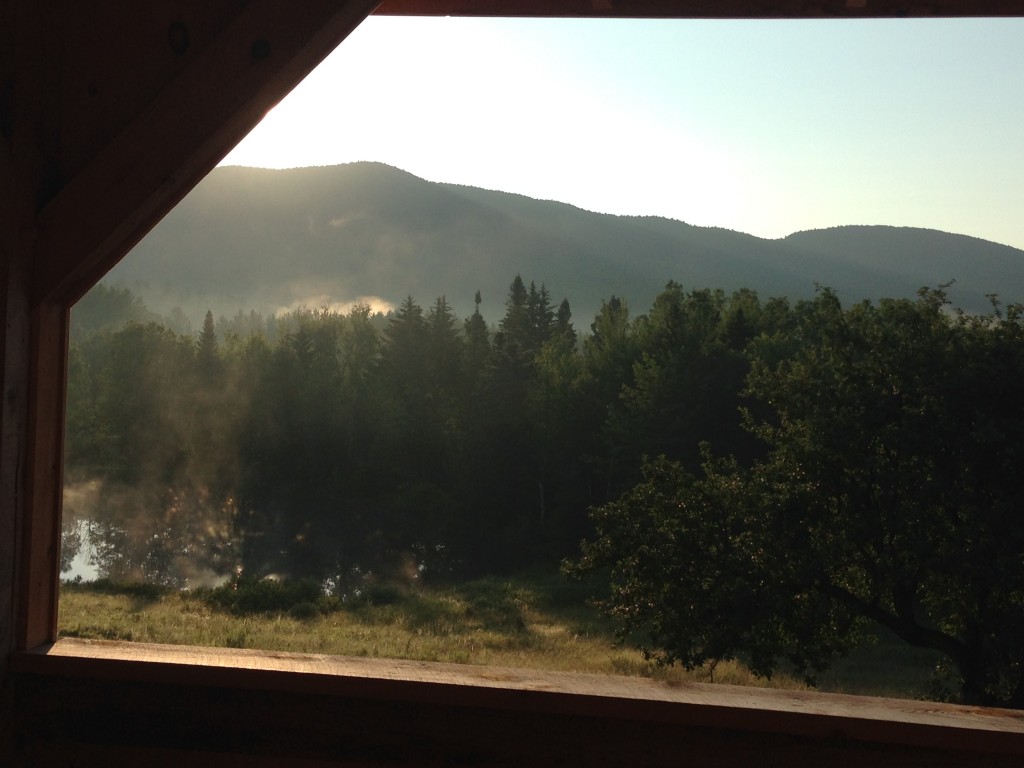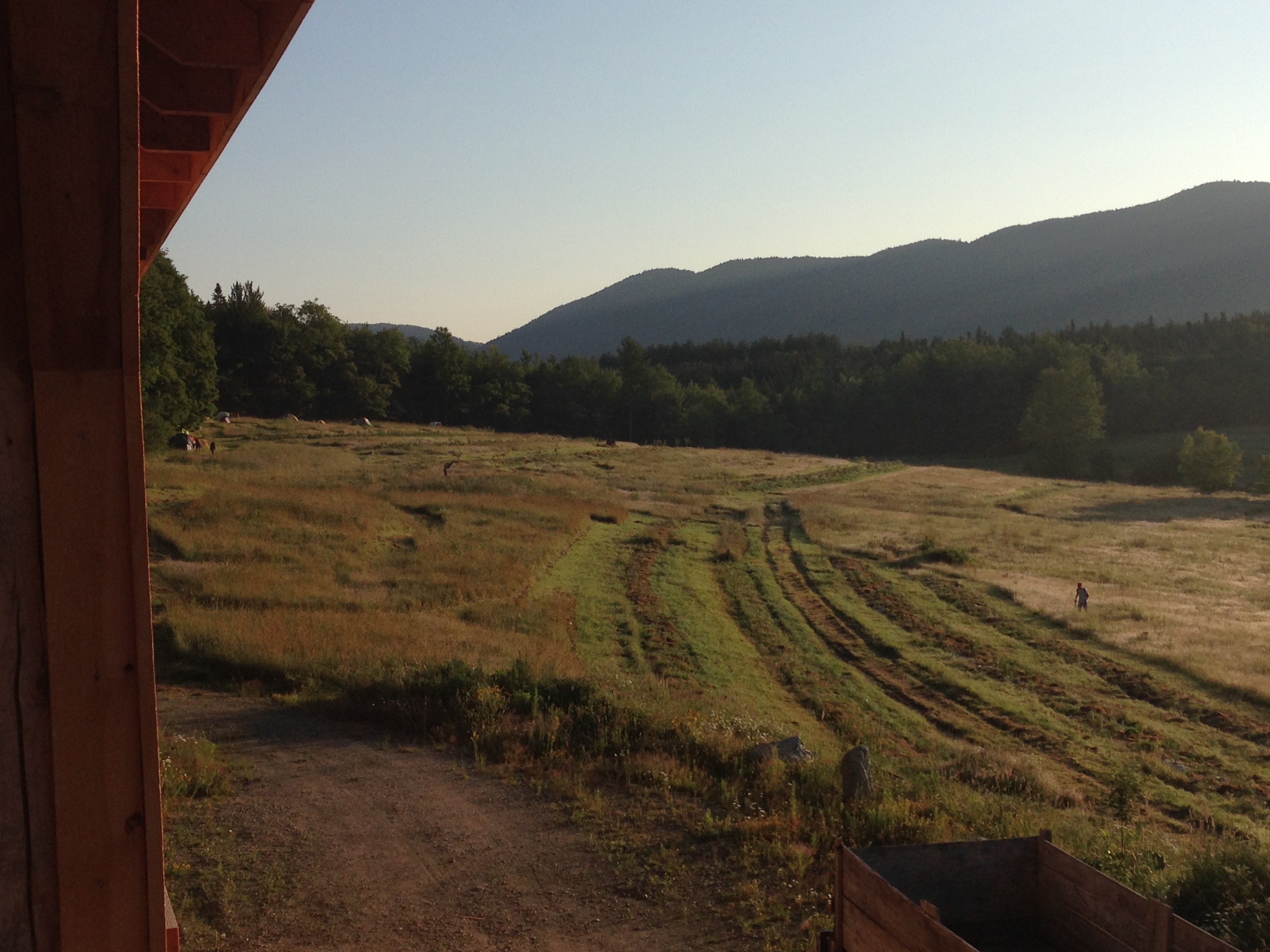This summer I attended a Permaculture Design Course (PDC) at Whole Systems Design in Richmond, Vermont, from July 10, though July 19, 2015. The PDC was tought by a team of permaculture professionals including Ben Falk of Whole Systems Design, Mark Krawczyk of Keyline Vermont, Sean Dembrosky of Edible Acres, and Mark Angelini of Roots to Fruits. Upon completion of the course, each student is presented with a certificate, stating that he or she has completed a PDC in accordance with the criteria set forth by the Permaculture Institute.
Instructors
The instructors listed above were phenomenal. I consider it a pleasure and a privilege to have had the opportunity to learn from them. They are all very educated, experienced, intelligent, generous, and compassionate. Each of them has special qualities, and they all meshed together to create a complete and holistic education. In addition to Ben, Mark, Mark, and Sean, there were supplemental educators, an educator in training, and guest speakers.
Content
The criteria mentioned above specify a 72-hour course, usually over 12 days. The PDC offered at Whole Systems Design is squeezed into 10 days beginning and ending with weekends. This scheduling structure allows more busy people to attend, but it also makes for a very condensed and intense course. Aside from meals and short breaks, we were learning and working from 7:30 AM to 10:30 PM every day except the first and last days. A little math will tell you that this course is well above the 72 hours, but the intensity may not be for everyone.

Since the course is condensed, we were expected to study ahead of time. They sent us a study guide with recommended readings and videos. Then we were asked to complete an in-depth and extensive pre-course evaluation to ensure we had a proper baseline of knowledge before showing up. This allowed us to focus most of our time on skill-building — lots and lots of skill building. We practiced gardening skills like biochar creation and green manure tea brewing, ground shaping skills like chinampa building and swale measuring/digging, tool skills such as blade sharpening and scythe use, plant skills such as propagation and grafting, kitchen skills such as vegetable fermentation and acorn processing, field skills like estimating the slope of a hill or the volume of a pond and determining the aspect of a property, survival skills such as fire-making and animal tracking, forestry skills like determining tree density and finding clues of past use history, foraging skills such as edible and medicinal plant identification, and many more including knot tying, walking off measurements, map drawing, team building (we had a new team each time we did teamwork), green wood crafting, wood splitting, etc.

We learned about design process from all the instructors. The best part was that they all had vastly different processes, experiences, and techniques. At one end of the spectrum, Cornelius, Ben’s design partner, is a former high-end landscape architect from California who uses advanced drawing techniques and CAD software. On the other end of the spectrum is Sean who does the majority of his design work on the ground, digging swales during rain, utilizing the water flow to measure contour lines, for example. It’s so refreshing to be taught several ways to do something, and it was relieving to see that you don’t need an advanced degree in landscape architecture to design functional landscapes.
One more aspect of learning that hadn’t been advertised on their website was the immense knowledge base of the students. About 40 students from different countries, different professions, and different walks of life attended the course. During meals and any breaks we were able to fit in, we always continued our learning with each other. The relationships I built, the knowledge and insight I gained, and the depth it added to the course are assets that shouldn’t be overlooked. Each of them changed my life.
Living Conditions
While on site students and instructors slept in tents at the managed edge of forest and grassland. On several nights, the temperature dipped into the 40’s… in the middle of July. I survived, of course, and when the sun would peek over the mountain tops, I’d unzip my tent to see piles of steam rolling off the ponds or a blanket of fog settled into the valley. My iPhone pictures captured none of the essence (or is it my photography skills?).

There were several mountain springs on the site. For my plains friends who’ve never tasted this — it’s like drinking cold remineralized reverse osmosis water that just continually runs out of the ground and into your cup. This faucet never needs to be closed, for as long as we preserve the water table and the integrity of the water, it will just always flow; an endless stream of crystal-clear, life-sustaining liquid more valuable than any other liquid our industrial machines can dig up, and it’s “free”. Some flowed into the five ponds on site, in which we bathed (with biodegradable soap of course).
Ben was able to capture another yield from his students while we were there — urine and fecal matter deposited into composting toilets to be composted into fertilizer for the farm. If you don’t already know about the awesome nitrogen available in urine, you’ve got to read up on liquid gold, guys. The other part is pretty obvious, we use manure all the time. Composted human manure is often called humanure. If you aren’t keen on the composting toilets, you’re also welcome to deposit your nutrients into the forest.
Food was provided by a local restaurant.They were awesome and 100% accommodating for all the different diets. Most of the food was organic and/or locally grown. They even made pancakes from the acorns that we processed in a skill share; they were delicious by the way.
Flaws
No experience is without its flaws. Preparing for the course was a bit difficult, even though they had sent a ton of information, mostly because it’s just a very different experience. Many of us did end up purchasing items to bring thinking they were required, and then never used them. And although the meals were delicious, I was not very good at eating only three meals at specific times of the day. My body is used to eating many small meals. Had I known no food would be available between meals, I would have brought snacks, so take note if you decide to take this course.
The fact that the course is so condensed meant that many skills had to be taught in “skill shares” in the morning before breakfast. Many days it was really difficult choosing one skill share over the others, and sometimes it was a bit disappointing that I had to miss some. Lastly, guest speakers were fun and interesting, but I think spending some of that time on learning more about design and mapping would have been more useful to me. Many of these flaws are personal opinions of mine, so take them with a grain of salt.
Recommendation
I highly recommend this course if you are interested in permaculture design or ecological design. To say it was life-changing is an understatement. Everything we do changes our lives somehow. This course was inspiring and enabling. I am filled with gratitude for the instructors, the other students, and the land, and the only way I can think to repay them all is to work. I’m just going to do it, do everything I can, and send out the ripples in which I’m now embodied.
